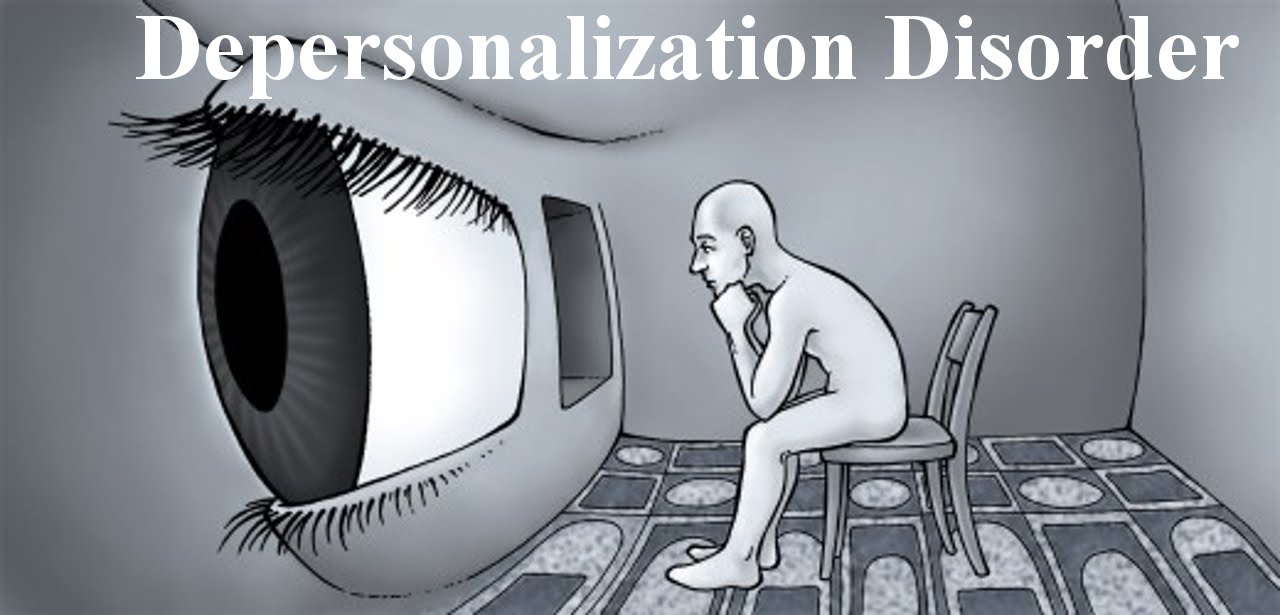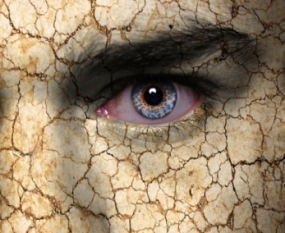Definition
Depersonalization, Derealization and Dissociation are three facets of the same problem. In the new version of the DSM, the DSM-5, it is called the Depersonalization and Derealization Disorder, (whereas in the DSM-4 they were two separate disorders.) The DSM categorizes the depersonalization and derealization disorder to be a dissociative disorder, (not an anxiety disorder). The new ICD-10 categorizes DP/DR as a syndrome, (Section F40-F48: Anxiety, dissociative, stress-related, somatic symptom disorder and other non-psychotic mental disorders F48 ) and it categorizes it a neurotic syndrome.
What is Depersonalization and Derealization disorder?
It is a body-mind connection disturbance, where you feel estranged from yourself, not yourself, (depersonalization) and the world feels unreal, foggy and strange, (derealization) your emotions may feel they are not yours, and you may experience a distance from your emotions or yourself (dissociation). On this website I will separate the symptoms of the complete disorder, but, when talking about the disorder, for the sake of easy reading, I will just refer to it as depersonalization.
The depersonalization and derealization disorder is a protective mechanism, a survival mechanism. That means it is caused by a life threatening experience, extreme overwhelming fear or trauma, or a bad trip caused by recreational drugs. More Diagnosis
Acute Depersonalization/Derealization
These three expressions are phenomena that can occur both normally and temporarily during duress like sleep deprivation, some emotional shock, very large changes like moving house/country or mourning (grieving). When depersonalization occurs acutely in these situations, it should dissolve by itself quickly in relatively short amount of time. Sleep deprivation means a shortage of sleep, and the inability to feel you are tired any more, inability to surrender to the tiredness.
Chronic Depersonalization and Derealization Disorder
When DP/DR/dissociation stick around longer, it is termed to be chronic and it is quite a severe and limiting stand alone disorder. This website is intended for those people who have chronic and debilitating disorder, it describes what DP/DR is, what the causes and triggers are, and what can be done to cure it.
The following character traits often stand out with people who have depersonalization and derealization disorder:
They are very sensitive or hypersensitive.
They exhibit a need for control, they want to control their feelings, emotions, thoughts. There is lots of thinking (ruminating) and analyzing.
They often have more of an issue with DP/DR directly after waking, and a little less in the later evening.
There is often social anxiety.
DP as a symptom of
Depersonalization, derealization and dissociation are also symptoms that can be caused by other psychological disorders like hyperventilation, panic attacks (panic disorder), trauma and PTSD, burnout, depression, psychosis, withdrawal symptoms when going cold turkey from addictions, Lyme's disease, etc.
Lastly, depersonalization, derealization and dissociation, together with losing time (and losing your story, waking up in strange places and having no recollection how you got there), and having multiple personalities are also a part of Dissociative Identity Disorder
To causes of depersonalization
To Therapy, treatment, training
What is depersonalization – Ben Meijer
Definitions: Depersonalization, Derealization and Dissociation
Depersonalization and derealization Second definition Ben Meijer
Big Pic – Wholeness
If being estranged from your self is one pole, the opposite pole is wholeness. Depersonalization and derealization are form of dissociation, which just means separation between feeling and thinking. Anna Breytenbach talks about the disease of separation between man and nature. This separation can be dissolved. Then, you can be whole in body, mind, soul, spirit, totally present in the now and in relation with your environment. Where thinking and knowledge are always separate and limited, whole is unlimited.
More about wholeness
More about separation sickness and interconnectedness with nature.

Diagnosis depersonalization and derealization
The normal procedure in healthcare is that a qualified person (doctor, psychiatrist, psychologist) diagnoses you. With that, you know what you have, and a treatment plan can be implemented (psychotherapy and/or medication) and your issue gets treated. The diagnosis is arrived at using a checklist of symptoms and criteria such as indicated in a handbook (DSM-5 or ICD-10) On the diagnosis page also what it is often confused with.
There is also a FAQ page for DP/DR.
Practically
Practically, I want to know a few things:
How exactly do you experience these issues?
Is there panic and fear?
How often and how intensely do you feel that?
Are the issues there continuously or does it fluctuate?
I will be asking you if the issues change during/after the sessions and exercises.

Symptoms Derealization
Derealization is the feeling the the world and people around are not real, fake. I see a mist or a fog between me and the world. Derealization is part of depersonalization and derealization disorder.

Symptoms Depersonalization
The strange feeling or unreal feeling caused by depersonalization makes that your own self feels strange, unreal and non-existent. You don't recognize yourself in the mirror. Who am I?

Symptoms Dissociation
Dissociation - separate from the union. Distance from your emotions, distance from others. You feel emotionally numb. Dissociation is part of DP/DR.

Causes Depersonalization and Derealization
The cause of depersonalization and derealization is always a life-threatening situation. 1. Bad trip, 2. Trauma. 3 Stress. Deeper cause is a disorganized attachment style and double bind.

Treatment Depersonalization, Derealization and Dissociation
Three phases of curing DP/DR are 1. preparation, 2 merging, 3 surrendering to life. ACT- framework, trauma therapy, self reliance. Call Ben 0031616015727




